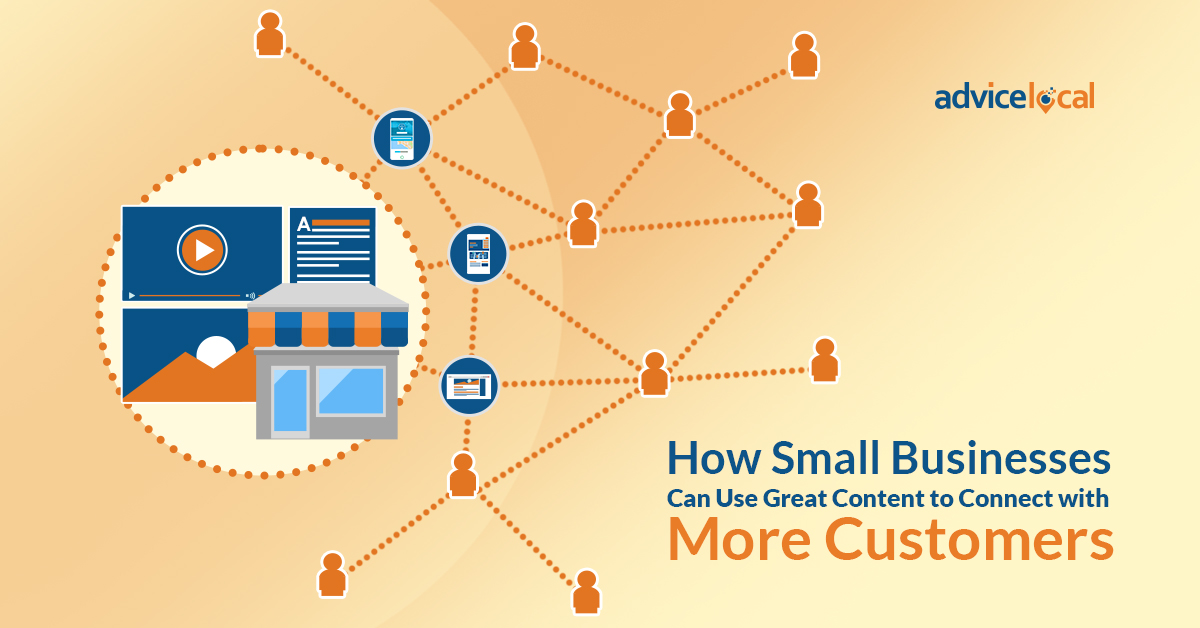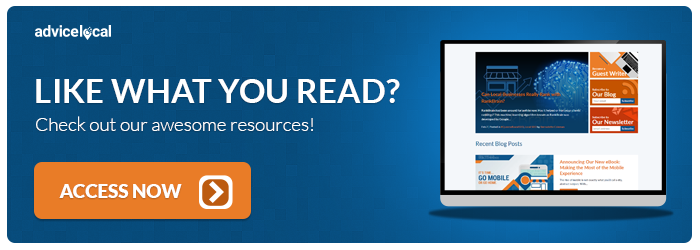In honor of National Small Business Week, we wanted to talk about how small businesses can benefit from creating and sharing awesome content with their audience.
When it comes to content marketing, there are several important questions small business owners must ask themselves before dedicating their resources to content creation. The key to effective content is not to publish more of it, but to commit to producing high-quality pieces that truly speak to your audience.
How to Decide What Type of Content to Create for Your Business
Are you publishing on your small business blog but not seeing results? Or maybe you’re not sure what type of content you should be creating in the first place? To make sure you’re getting the most value possible from your content, consider the following questions:
1. What is Your Primary Goal?
Have you ever heard the phrase ‘blog and pray?’ It’s what small businesses without a content plan end up doing when they publish blog content. As you may have guessed, it’s generally not very effective – especially if you want to use content to nurture leads.
Defining a goal for your content is such an important step for small businesses looking to expand their online presence and attract new customers. There’s simply no reason to invest resources into producing content that doesn’t serve a specific purpose.
So, ask yourself:
- Are you trying to build brand awareness? Are local customers familiar with your business?
- Are you selling a specific product or service? If so, how can your content support those sales?
- Are your trying to establish yourself as an industry thought leader?
Once you know your goal for each piece of content, you can use that content to move readers through the various stages of the customer journey. Ideally, you’ll create different types of content for different types of customers – including those who are just learning about your brand and those who are ready to make a purchase.
If your goal is to build brand awareness, publishing evergreen blog posts (that is, sustainable content with a long shelf-life) and targeting relevant keywords could be a good starting point. If your goal is to convert readers into customers, you should focus on content designed to promote your products and solutions.
2. Who is Your Target Audience?
Your target audience is already consuming content online. If you can figure out what they’re searching for, what they’re reading, and where they’re having online conversations, you can give your business a major advantage when it comes to connecting with future customers.
If you’re not sure where to start, look at industry leaders and brands with larger followings to see what type of content they’re publishing and where they are sharing it. This will give you an idea of which channel your customers are most active on, whether it’s Twitter, Facebook, or a local forum. (For example, a coffee shop might get more value from an Instagram presence than an insurance company.)
3. How Can You Add Value?
From restaurants to retail stores, small businesses need to maintain an active online presence. Creating new content and posting to social channels are great ways to engage consumers and expand the business’ reach – but only if people actually care about what you’re sharing.
So, be honest with yourself: Is your small business content beneficial to your customers? Does it add value?
Here are a few tips to keep in mind when creating new content that adds value:
- Make it useful and informative – What do your readers care about? Can you provide tips to make their lives easier while remaining relevant and on-brand? For instance, a hardware store might post a series of how-to blogs for home improvement or a moving company could produce a short video on the cost of moving yourself vs. hiring professionals.
- Make it interesting and engaging – Are there timely industry-related topics you should cover? Whether you write a blog post or tweet about it, your business should participate in the conversations that matter to your audience.
- Don’t let the content die once it’s published – Always promote your content on your social channels and engage with anyone who shares or comments. Interacting on social helps you build relationships with your community and consumers, plus it increases your reach to include the network of anyone who engages with you.
- Make it specific – Connect with local customers on a more personal level by including local elements in your content. Whether that means referencing events in your city, public figures, or news stories, you can humanize your business and remind consumers that you’re local by tying in these fun tidbits.
Define Your Brand and Find Your Voice
Content is an important component of growing your online presence. By answering the questions above you can develop a content marketing strategy and brand voice before you spend time planning, creating, and promoting your blog and social content.
Though the best type of content for your business depends on your industry, your goals, and who your audience is, small businesses should always create content with a specific goal and audience in mind. Do this and your content will hit the mark every time.
Do you want more exposure for your small or medium-sized business? Advice Local can help you connect with local customers by creating a custom content plan or writing high-quality content for you. Call us today at 855-714-7634 to find out what we can do for your business or the business you represent!





3 thoughts on “How Small Businesses Can Use Great Content to Connect with More Customers”
Comments are closed.